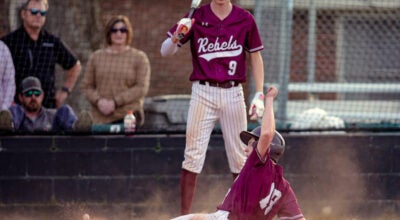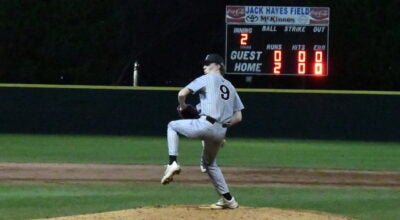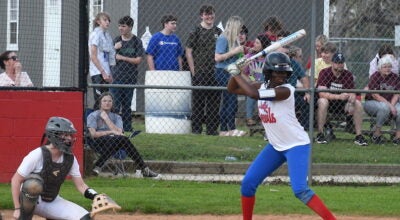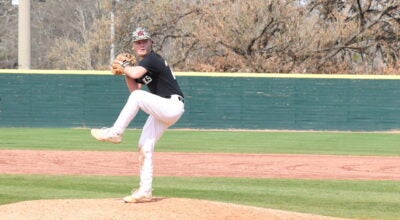Griffey’s stay at home more bitter than sweet
Published 9:06 pm Friday, August 1, 2008
CINCINNATI – Imagine Junior chasing Hammerin’ Hank in his hometown.
Perfect, no? Sure seemed that way.
When Ken Griffey Jr. joined the Cincinnati Reds in 2000, giddy fans flooded the team’s phone lines with ticket requests and started daydreaming about championships and records to come. Stores excitedly posted “Welcome Home Junior!” greetings on their outdoor advertising signs.
The city already had one of its own as baseball’s career hits leader – the banished Pete Rose – and could ruminate about another one of its own powering past Hank Aaron for the home run record, as well. Such a perfect match.
Instead, it turned out to be a very poor match, this private superstar and his adoring hometown. Griffey never really felt at home in the place he grew up. When he was traded to the Chicago White Sox on Thursday, few tears were shed in the place where he learned that short, sweet swing.
It had the feeling of an inevitable breakup.
“I’d say he’s a very good player, but he’s getting old,” said Bryan Lamers, a 43-year-old consultant and longtime Reds fan, mulling the trade on the city’s downtown square. “It’s time to move on.”
On a number of levels, the relationship never worked, turning out to be more bitter than sweet. When he joined the White Sox in Kansas City for his first game on Friday night, Griffey thought more about the sweet moments when asked to reflect on his time in his hometown.
“I had a lot of fun, ups and downs – more ups than downs – learned a lot, met some new friends,” Griffey said.
The city was expecting to see a lot of Griffey’s smiling face and his affable “Junior” persona when he arrived. Instead, Griffey – a very private person away from the field – appeared overwhelmed and suffocated by the outpouring. The local news was all-Junior those first few days. The never-ending attention lasted for most of that first season.
Griffey pulled back, creating a chill in the relationship. Then, the injuries did him in.
During his second season in Cincinnati, Griffey tore a hamstring. That was just the start. In the next few years, he spent more time overcoming injuries – torn patella tendon, torn hamstrings, dislocated shoulder, torn ankle, dislocated toe – than hitting homers.
An All-Century outfielder in the 1990s with Seattle, he was a part-time player in Cincinnati. And the fans turned on him. They started wondering aloud whether the trade was a mistake. They jeered him from the stands. He would glare back or worse.
By 2002, the relationship was severely strained.
“I get consistently beat up for no reason,” Griffey said, during his third season in Cincinnati. “It’s been happening since the very first day I got here, and I’m tired of it. You try to bend over backward to do the right thing, and it just seems to get thrown in my face.
“I came here to play baseball. I took less money. I didn’t whine or anything, and this is the thanks I get? I don’t need that.”
It didn’t help that the team was struggling on the field. When the Reds narrowly missed the postseason in 1999, losing a one-game playoff to the Mets for the NL wild card, better days seemed ahead.
But instead of getting the starting pitching that could keep the Reds in contention, former general manager Jim Bowden went after his all-time favorite player in the offseason. The club gave Griffey a nine-year, $116.5 million contract that severely limited what it could do with its pitching staff.
It wasn’t Griffey’s fault that the Reds fell into a rut of seven straight losing seasons, with the lack of pitching a consistent thread. Management couldn’t decide what it wanted – Griffey played for six managers and four general managers during his 8¬Ω years in Cincinnati, an astounding rate of turnover that is at the core of the problem.
By the time the 2008 season started, the whole thing had become tiresome.
When Griffey finally got his benchmark 600th homer this season, fans had a feeling that it was his last hurrah. The team promoted the moment – only five other players have reached the mark – but it failed to generate much enthusiasm. Instead, the fans were ready to embrace rookies like Jay Bruce and Johnny Cueto, who provide hope of better days ahead.
At age 38, Griffey has lost a lot – that short, sweet swing has developed wrinkles, making it tough for him to catch up with fastballs. His speed and range in the outfield have diminished. Despite playing in one of the majors’ most homer-friendly ballparks, Griffey had only 15 homers and a .245 batting average when he was dealt to the White Sox, who surprised the Reds with their interest in him.
It looked as though Griffey and the Reds were headed for an awkward but inevitable parting in the offseason. Griffey’s contract includes an option for 2009 at $16.5 million, far more than he’s worth at the moment. The Reds planned to exercise a $4 million buyout after this season, making him a free agent.
The trade provided a chance for a clean break.
“Ken Griffey Jr. was a big part of this franchise for a long time,” general manager Walt Jocketty said. “So this is the beginning of a new era, I guess.”






